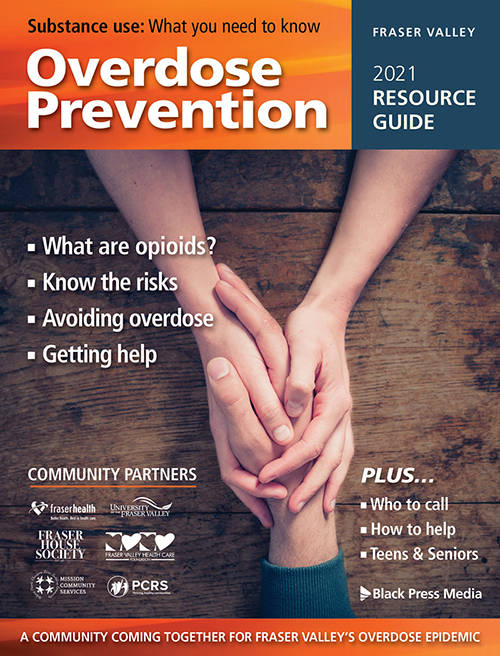Have you been affected by the opioid epidemic?
In reality, there are few people here in the Fraser Valley, and across British Columbia, who have NOT been affected in some way. Friends, family members, neighbours and co-workers, recreational users or those fighting through addiction … all have been impacted by the epidemic related to opioid use and addiction.
In 2020, 1,726 people died of drug overdoses in B.C., including 574 in the Fraser Health region.
In the first five months of 2021, B.C. had 851 overdose deaths, with 291 in Fraser Health. Who were those people? Eighty per cent of those who died from drug overdoses were men and 70 per cent were aged 39 to 59.
And by and large, deaths aren’t happening in the street as some might expect – 85 per cent have occurred indoors, in people’s homes.
It’s important, too, to recognize the impact on First Nations communities, where effects of colonialism continue to have significant consequences. The First Nations population in B.C. saw a disproportionate increase in overdose deaths in 2020, with people lost due to toxic drugs at 5.3 times the rate of non-Indigenous people in BC, the First Nations Health Authority notes.
It was with all these facts in mind that Black Press Media’s Agassiz-Harrison Observer, Chilliwack Progress, Abbotsford News, Mission City Record and Hope Standard wanted to find a meaningful way to respond – to make a difference.
“To be able to share vital information and resources, and to pull back the curtain on this epidemic as a way of reducing stigma and encouraging people to come forward and seek the supports and services they need – this is what we have been able to do with our Overdose Prevention Guide,” says Carly Ferguson, Black Press Group Publisher.
The Overdose Prevention Guide explores the wide-reaching epidemic in the local context, offering tangible information and options for those using opioids, in addition to parents, partners and friends who are also affected.
Working with those on the front lines of the epidemic, those with lived experience, the guide also shares news of innovative programs and initiatives that are making a difference, from more options for Opioid Agonist Therapy, an effective treatment for opioid addiction, to valuable resources for families.
The project is also made possible thanks to the visionary support of community leaders Fraser Health, Fraser Valley Health Care Foundation, University of the Fraser Valley, Mission Community Services, Fraser House Society and Pacific Community Resources Society.
And on Aug. 31 – International Overdose Awareness Day – we come together to remember the lives lost to overdose and to recognize the crucial role of people with lived and living experience of substance use in the response to the overdose epidemic.
We encourage you to look for the Overdose Prevention Guide at various health and social services locations around The Fraser Valley, or to view it online.
Thank you for helping us make a difference.






